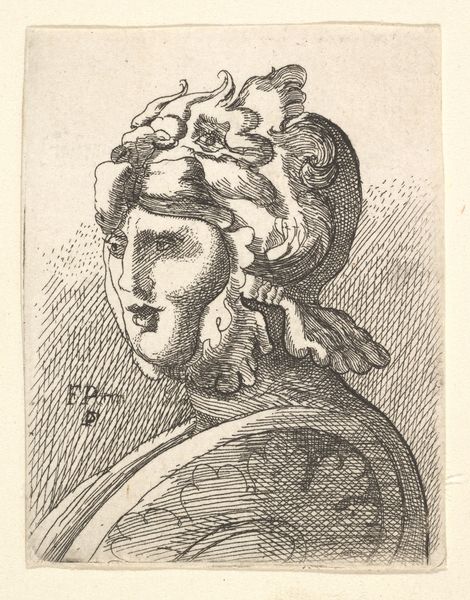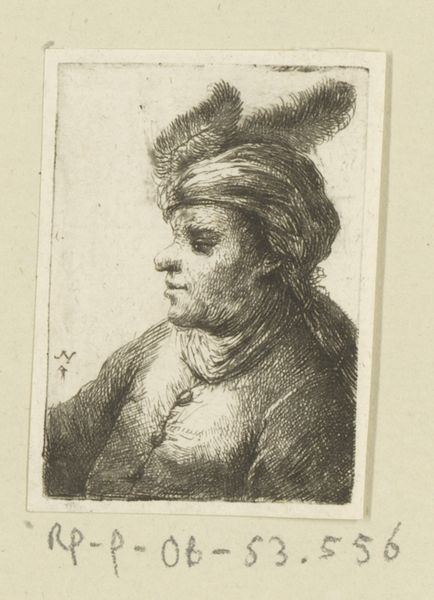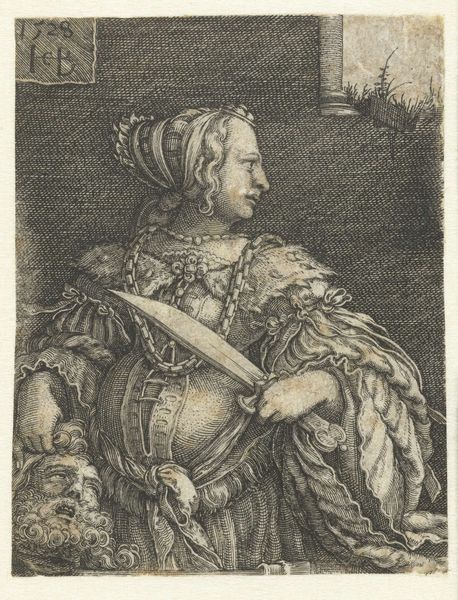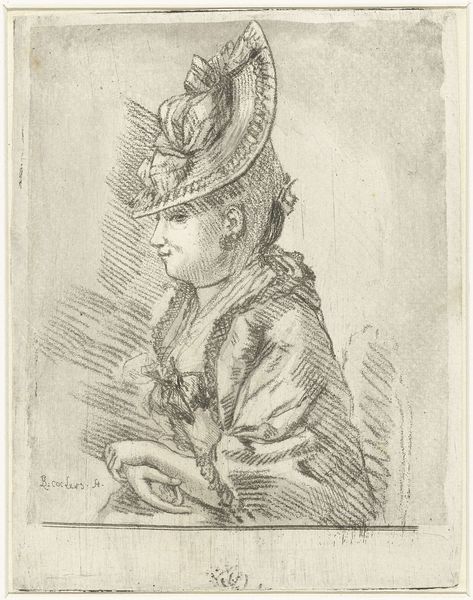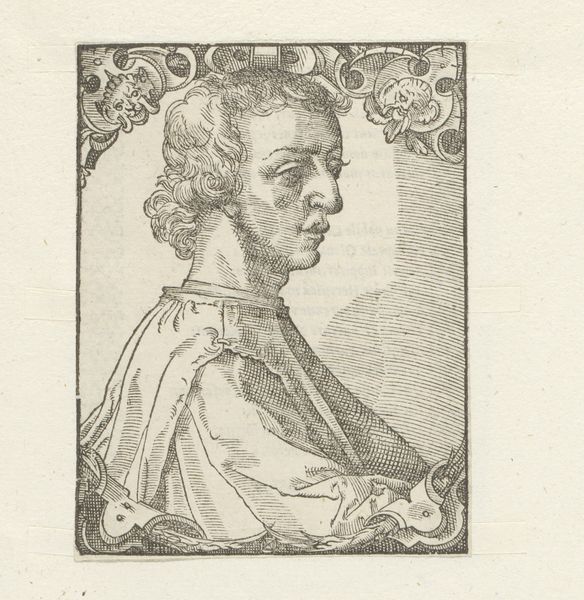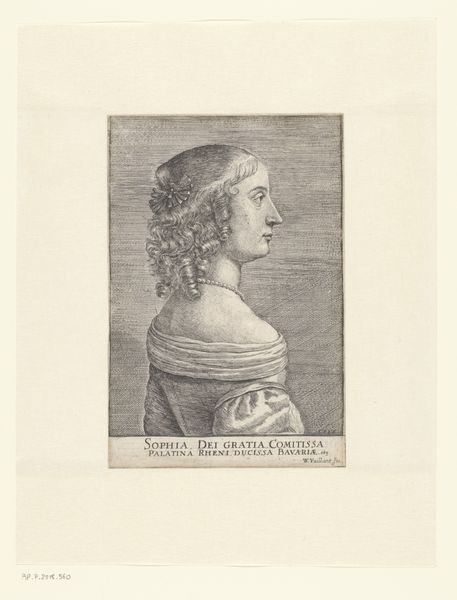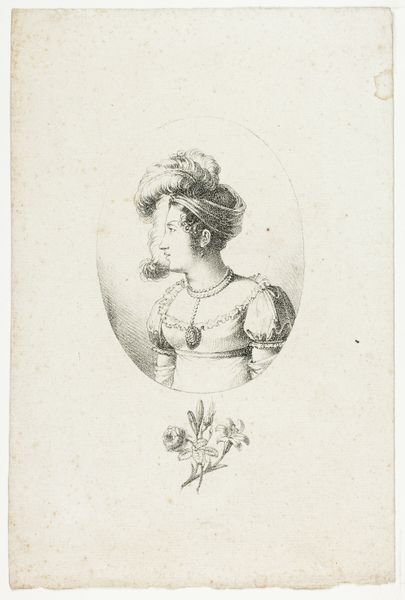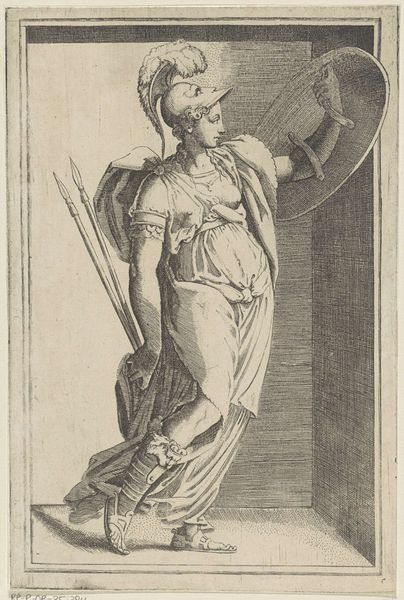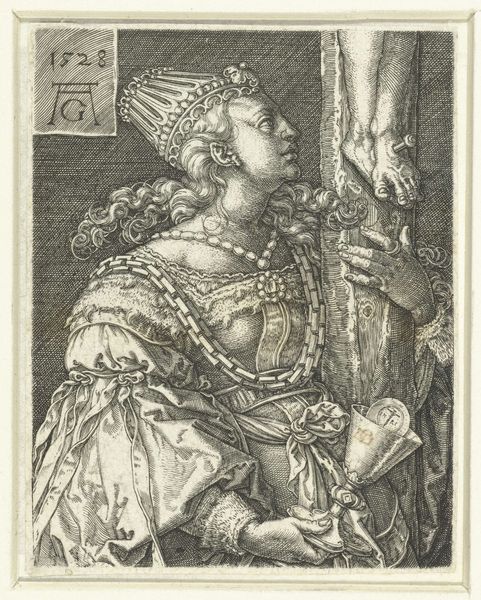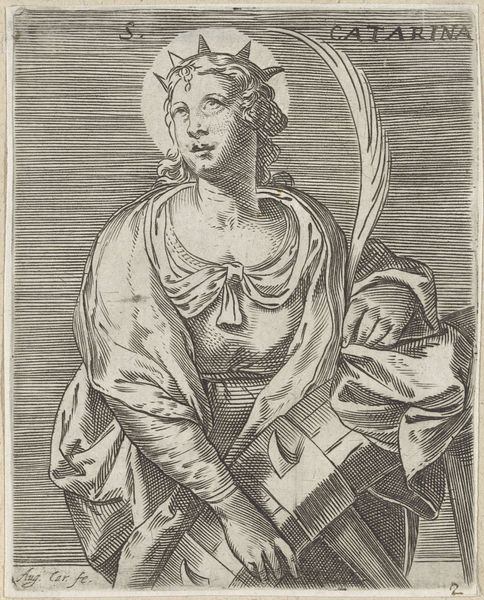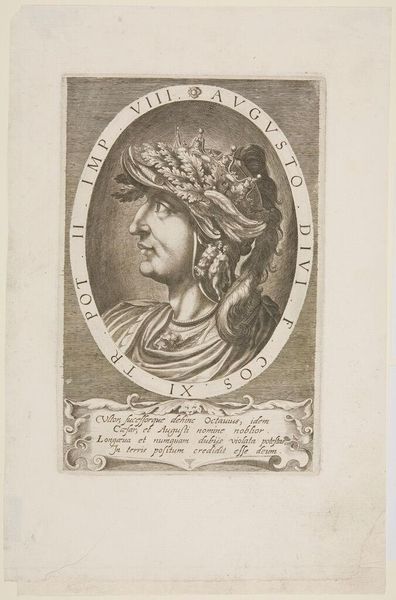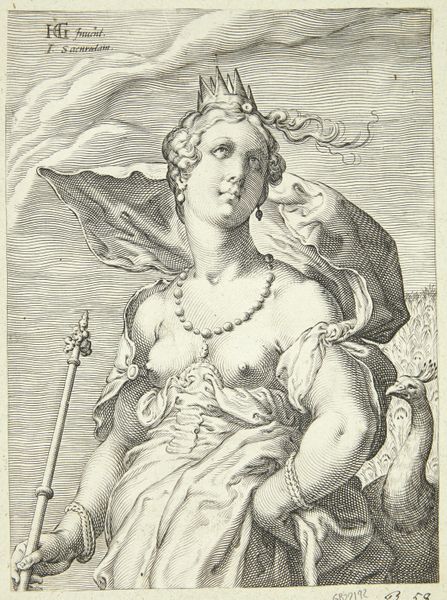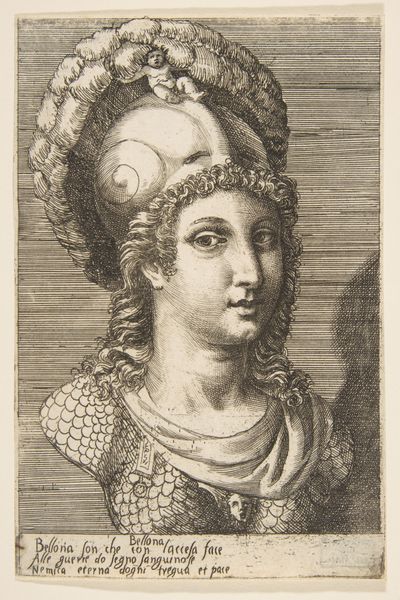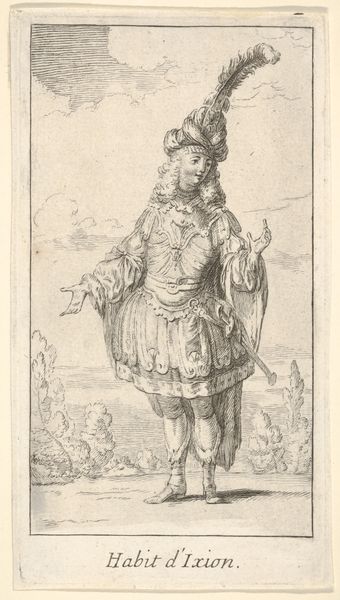
engraving
#
portrait
#
11_renaissance
#
geometric
#
history-painting
#
engraving
Dimensions: height 105 mm, width 83 mm
Copyright: Rijks Museum: Open Domain
Curator: Welcome! Here we have an engraving titled "Portret van Alexander de Grote", or "Portrait of Alexander the Great," dating back to somewhere between 1549 and 1575, made by an anonymous artist. Editor: My first impression is how formal and powerful he looks. It's almost like an official document or seal. The helmet detail and the ornate borders contribute to this feeling of controlled, even regal, visual information. Curator: It certainly serves that purpose. Engravings at this time played a significant role in disseminating images of power and historical figures. It was crucial to create and reinforce a powerful image, hence the idealized features. The fact that it’s anonymous tells us something about the commercial function and spread of the work, too. Editor: I see it a bit differently. I notice the details—like the figure of Pegasus, which isn’t very common in Alexander’s portraiture and invites us to look closer. Who commissioned this? What sort of audience did they imagine consuming these images and narratives? The presence of the pegasus suggests Alexander's ambition and possibly hints at his hubris, challenging the dominant views and mythic qualities that circulated through such prints. Curator: That’s a fair point; interpretations evolve as power dynamics shift. Early modern audiences often sought moral lessons in historical subjects. Alexander was admired for his military genius but also criticized for his excesses and unchecked ambition. Editor: I find it quite poignant how, even rendered in such a crisp, controlled style, we get glimpses of ambiguity, perhaps even doubt about imperialistic glory. Curator: A productive interpretation given contemporary discussions around leadership and representation. The art reflects, and is refracted through, the ages. Thank you for that insight. Editor: Absolutely! These are the dialogues we need when interpreting historical art. The meaning constantly evolves.
Comments
No comments
Be the first to comment and join the conversation on the ultimate creative platform.
